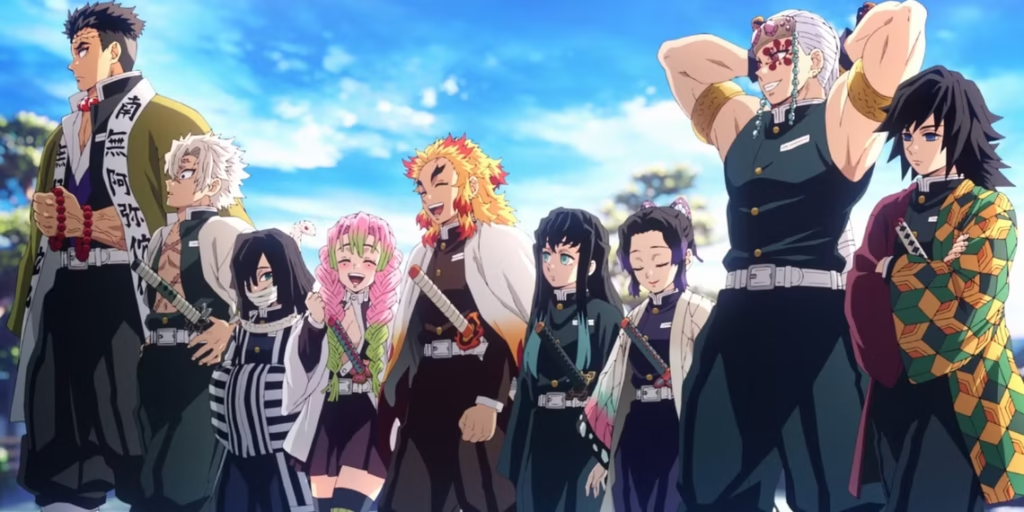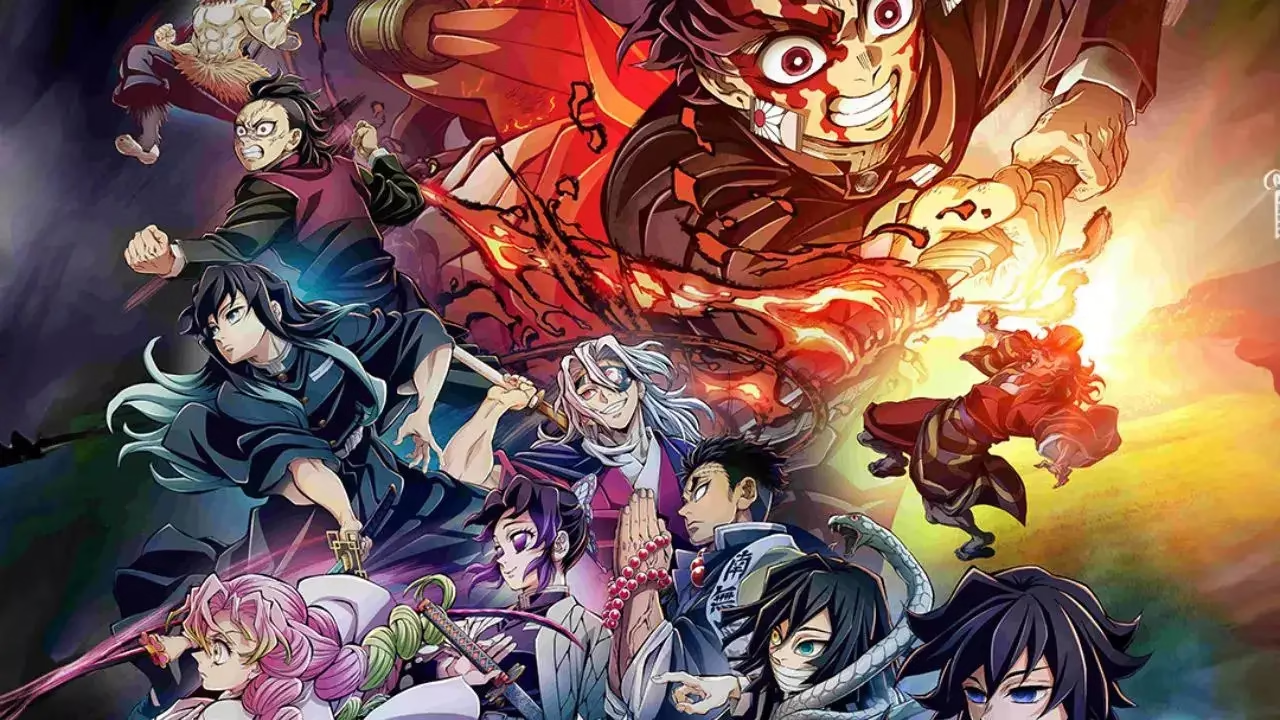In just a few short years, Demon Slayer: Kimetsu no Yaiba transformed from a promising new series to a cultural juggernaut whose influence extends far beyond Japan’s borders. With record-shattering viewership, unprecedented box office success, and merchandise flying off shelves worldwide, the Demon Slayer anime impact on the industry has been nothing short of revolutionary. But what exactly made this particular series break through where countless others couldn’t, and has it permanently changed how anime is produced, distributed, and consumed globally?
Visual Excellence: How Ufotable Raised the Bar

When Episode 19 of Demon Slayer (“Hinokami”) aired in 2019, social media exploded with clips of Tanjiro’s water-and-fire breathing technique against Rui. This wasn’t just another well-animated fight scene – it represented a paradigm shift in what viewers could expect from weekly television anime.
Ufotable, the studio behind Demon Slayer, had already built a reputation for quality with their work on the Fate series. However, their approach to Demon Slayer combined traditional 2D animation with cutting-edge digital effects in ways that created something fresh and visually stunning. Their innovative blend of 3D camera movements, digital particle effects, and dynamic lighting complemented rather than replaced hand-drawn animation.
“What Ufotable achieved wasn’t just technical excellence, but emotional resonance through visual storytelling,” notes animation critic Tadashi Sudo. “The animation quality didn’t just showcase spectacle – it enhanced the narrative’s emotional core.”
This breakthrough forced other studios to reconsider their production values. Suddenly, the bar for what constituted “good enough” TV anime animation had risen significantly.
Cultural and Commercial Influence
The numbers tell a staggering story about Demon Slayer’s commercial impact:
Demon Slayer: Mugen Train earned over $503 million worldwide, becoming Japan’s highest-grossing film ever – surpassing Studio Ghibli classics and even Titanic. This wasn’t just an anime record; it was a cultural watershed moment.
Merchandise sales exceeded $2.6 billion in Japan alone by 2021. From convenience stores to high-end fashion brands, Demon Slayer collaborations became ubiquitous. Koyoharu Gotouge’s original manga sold more copies in 2020 than the entire U.S. comic book industry combined.
This commercial success story challenged long-held industry assumptions about anime’s ceiling. Before Demon Slayer, many believed anime blockbusters could only come from established franchises with decades of history (like One Piece) or acclaimed directors (like Miyazaki). Demon Slayer proved a relatively new property could achieve unprecedented success with the right execution.
Streaming and Distribution Shifts

The Demon Slayer phenomenon coincided with – and accelerated – major shifts in how anime reaches global audiences.
When Sony acquired Crunchyroll and merged it with Funimation in a $1.175 billion deal, industry analysts pointed to Demon Slayer’s success as a key factor demonstrating anime’s global market potential. Netflix, Amazon Prime, and HBO Max all subsequently increased their anime acquisition budgets.
“Demon Slayer represented a turning point in how quickly international audiences could access new anime,” explains media analyst Kaori Takahashi. “The demand for same-day simulcasts surged, and platforms that couldn’t offer immediate access found themselves at a disadvantage.”
This acceleration compressed the traditional lag between Japanese broadcast and international availability. Where fans once waited months or years for official translations, the Demon Slayer effect helped normalize simultaneous global releases as the new industry standard.
Impact on Anime Studios and Production Quality
The ripple effects of Demon Slayer’s success quickly spread throughout the industry. Studios like MAPPA (Jujutsu Kaisen, Attack on Titan Final Season), Wit Studio (Spy x Family), and Science SARU (Keep Your Hands Off Eizouken!) all seemed to respond with productions featuring heightened visual flair and technical ambition.
This raised quality ceiling comes with concerning implications, however. Animation is notoriously labor-intensive, and the industry already struggled with tight schedules and underpaid artists. The pressure to deliver “Demon Slayer-level quality” has intensified these challenges.
“There’s definitely been a post-Demon Slayer escalation in visual ambition,” notes veteran animator Hiroshi Yamamoto. “But studios aren’t necessarily getting larger budgets or longer production schedules. Something has to give, and unfortunately, it’s often the well-being of animation staff.”
This tension between increased quality expectations and limited resources remains one of the most challenging aspects of Demon Slayer’s legacy for the industry itself.
Expert Opinions & Industry Reactions
Industry veterans have been vocal about Demon Slayer’s transformative influence:
Masahiko Minami, President of BONES studio (My Hero Academia), observed: “What Demon Slayer accomplished wasn’t just creative success but mainstream cultural penetration. It reached people who’d never considered watching anime before.”
Crunchyroll co-founder Kun Gao noted: “Demon Slayer demonstrated that anime isn’t just growing incrementally – it’s capable of exponential jumps in popularity when everything aligns perfectly.”
Director Mamoru Hosoda (Belle, Summer Wars) offered a more measured take: “We’ve seen phenomena before – Evangelion, Attack on Titan – but Demon Slayer’s impact feels different because it arrived when global distribution systems had finally matured. The question is whether the industry can sustain this momentum.”
These varied perspectives highlight how Demon Slayer has become a reference point for discussions about anime’s future direction and global potential.
Demon Slayer’s Long-Term Legacy in Anime
As the dust settles, the anime industry continues to process Demon Slayer’s implications. Was this lightning in a bottle or a template for future success?
Several trends suggest lasting change:
- Production committees are taking bigger risks on new properties rather than relying exclusively on established franchises.
- Animation quality expectations have permanently shifted, particularly for action scenes, where the integration of traditional animation with digital effects has become more sophisticated.
- Global audience considerations now factor earlier in production decisions, with simultaneous worldwide releases becoming the norm rather than the exception.
- Cross-media promotion strategies have evolved, with tighter coordination between manga, anime, film, and merchandise.
The most significant question is whether Demon Slayer represents a singular phenomenon or a repeatable formula. Recent successes like Jujutsu Kaisen and Chainsaw Man suggest elements of the Demon Slayer approach can indeed be adapted to other properties, though none have yet matched its complete cultural takeover.
What remains clear is that Demon Slayer has become a benchmark against which other series are measured – not just artistically, but commercially and culturally. In that sense, the Demon Slayer anime impact has indeed changed the game.
FAQs
-
Why is Demon Slayer considered a game-changer in the anime industry?
Demon Slayer transformed the anime landscape by breaking numerous records, including becoming Japan’s highest-grossing film ever with Mugen Train. It expanded anime’s global audience beyond traditional fans, raised production quality standards, and demonstrated unprecedented commercial potential for anime properties across multiple markets and merchandise categories.
-
How did Demon Slayer impact anime production quality?
Ufotable’s groundbreaking animation techniques—blending traditional 2D animation with digital effects, dynamic camera work, and atmospheric lighting—established new quality benchmarks for TV anime. This raised audience expectations and prompted other studios to invest more resources in visual presentation, particularly for action sequences and emotional climaxes.
-
What made Demon Slayer: Mugen Train so successful?
The film’s success stemmed from multiple factors: it directly continued the popular TV series rather than being a side story; it featured accessible storytelling with universal themes; it showcased breathtaking animation; and it benefited from perfect timing, releasing when theaters reopened after COVID-19 restrictions in Japan. Additionally, the emotional connection viewers had formed with the characters through the TV series translated into intense audience demand.
-
Did Demon Slayer change how anime is streamed globally?
Yes, Demon Slayer accelerated the trend toward simultaneous global releases. Its popularity demonstrated the financial benefits of making anime immediately available worldwide, leading to increased investment in streaming platforms and international licensing. This shift helped eliminate the delays between Japanese broadcasts and international availability that had previously plagued the industry.
-
Which studios followed Demon Slayer’s production example?
Several studios have notably elevated their production approaches following Demon Slayer’s success. MAPPA demonstrated similar visual ambition with Jujutsu Kaisen and the final season of Attack on Titan. Science SARU’s work on Eizouken and Wit Studio’s collaborations on Spy x Family show similar attention to distinctive visual styles and fluid animation. These studios have particularly focused on integrating digital effects with traditional animation in ways that enhance rather than replace hand-drawn techniques.


Leave a Reply